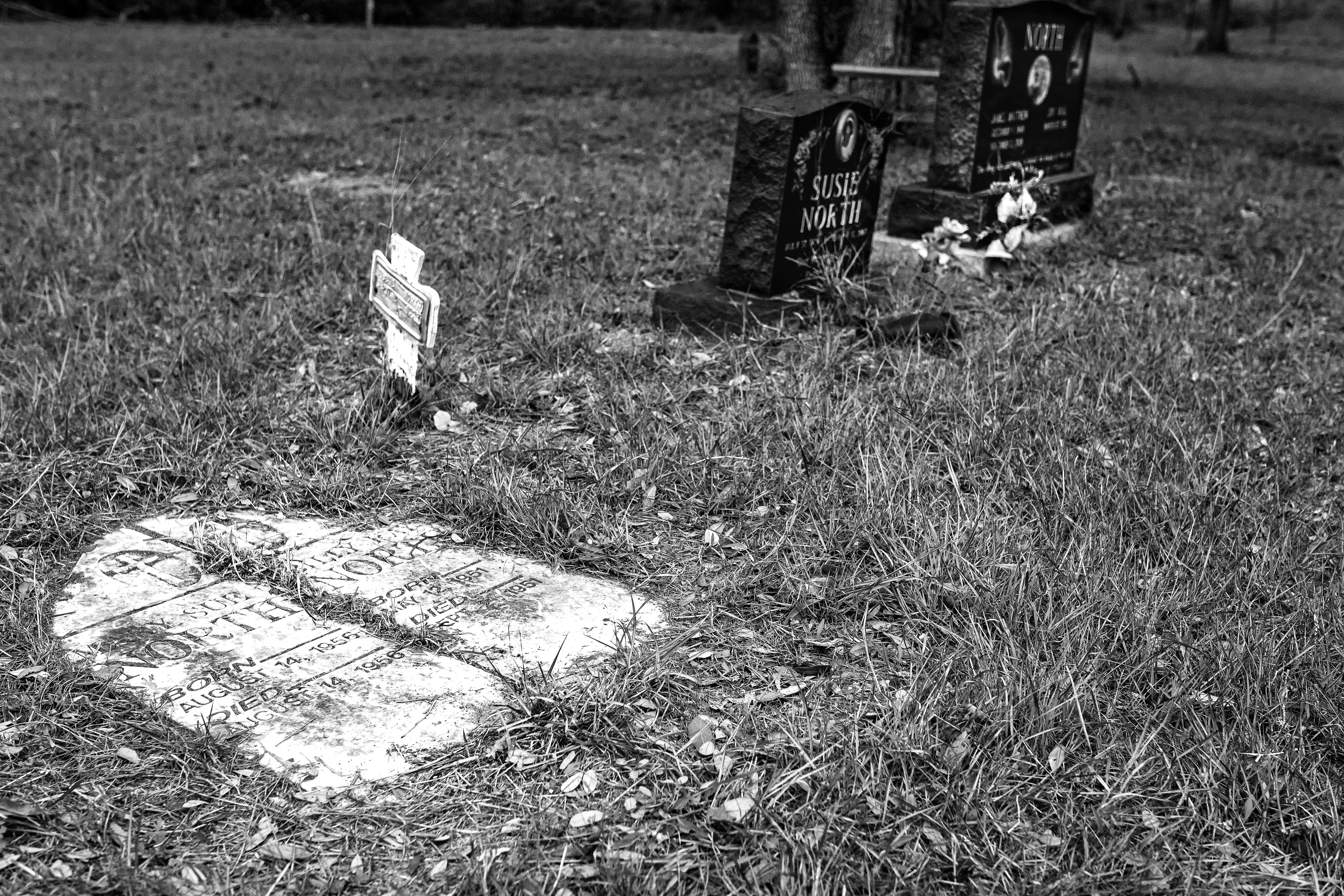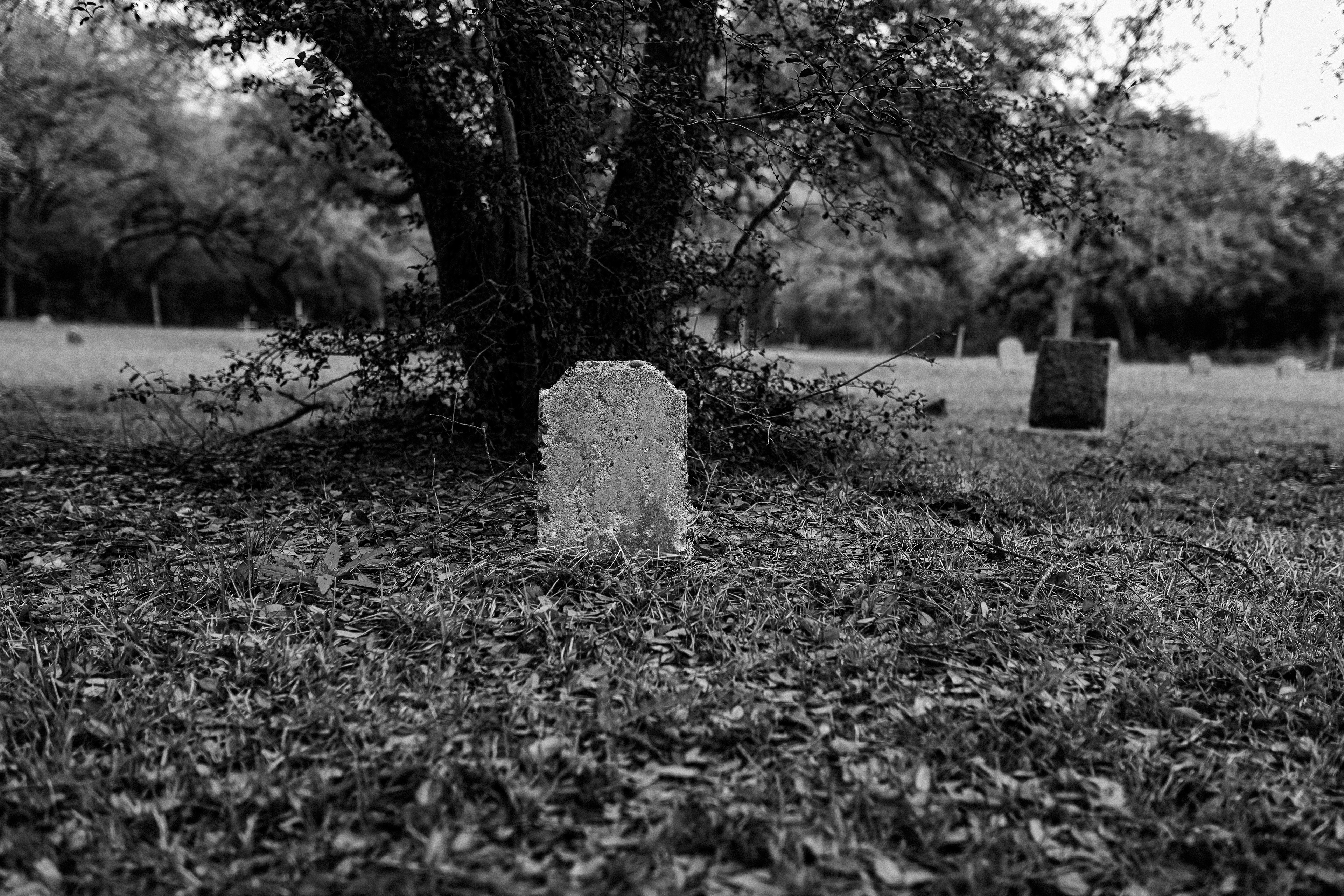Infant Mortality, Southern Cemeteries, and the Statistical Imagination
Graves of Declared Futures is a DocuPhotoMentary, a term I use to describe my post-documentary visual art practice that resists the colonial orientation of traditional documentation. This methodology is grounded in praxis. I do not stop at theory; I turn ideas into structures, habits, and tools that descendants and communities can use. Guided by a framework I developed called AI3: Archival Intelligence, Ancestral Intelligence, and Augmented Interrogation. It merges critical theory and lived experiences through a cyclical process of reflection and action, shaped by the complexities of archival memory, social conditions, and cultural continuity.
I am from Jackson County, Texas, and this work centers on infant graves within the cemeteries of historic Black settlements and Freedom Colonies like Garcitas, the resting places of my relatives and extended kin. These communities were founded by Americans of African descent after Emancipation as self-determined centers of land ownership, worship, schooling, and burial. The preservation of these specific sites is vital, as they hold historical contexts and embedded ancestral intelligence unique to the rural Black experience, narratives often missing from institutional and academic spaces. My methodology is not one of aesthetic detachment; it is an ethically responsible practice shaped by my familial ties and position within the community.
The project explores both the historical and current aspects of systematic racism. It examines the statistical basis of racial exclusion, focusing on Frederick L. Hoffman’s 1896 pseudoscientific publication Race Traits and Tendencies of the American Negro, which justified denying Black families insurance and healthcare. This project turns that policy text into a visual landscape of its impacts. This racist ideology has lasting and damaging effects. In 2021, Jackson County had an infant mortality rate of 26.1 deaths per 1,000 live births, compared to the 5.6 state average, and Black infants in Texas die at more than double the rate of white infants. In cemeteries of Freedom Colonies, these figures appear as names, dates, and family lines on infant headstones, telling stories of interrupted futures and fragile community histories.
This work confronts what is lost to this violent system: the individual futures, potential, and stories obscured by dehumanizing data. By centering on the specific lives and names etched on the headstones, the project moves beyond statistics to honor the active landscapes of memory and intergenerational knowledge these cemeteries represent. Preserving Freedom Colonies and their burial grounds maintains evidence of Black self-determination, kinship networks, and community-governed care for the living and the dead. What is gained is a counter-narrative of care and endurance. This DocuPhotoMentary is not an endpoint; it is a declaration of presence and continuity carried forward by our Black families, directly challenging the premise of Black biological deficiency that Hoffman and his contemporaries manufactured.








